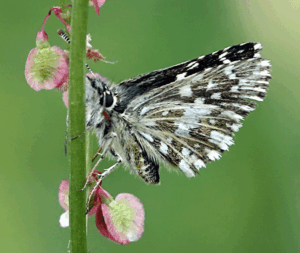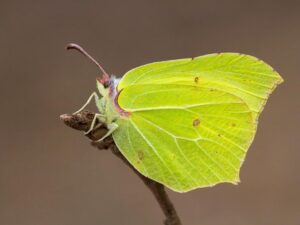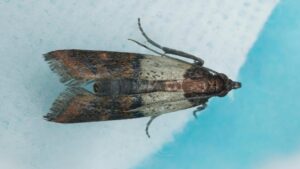Butterflies should eat what food, diet is very curious, butterflies always look very beautiful when they are fluttering. Unfortunately, we can no longer see such flocks of butterflies, and sometimes I still feel very nostalgic when I think about it. However, in order to be able to see the appearance of flocks of butterflies when I was a child, many farmers are now breeding butterflies in bulk, most of them are put into the butterfly garden to go, so now butterflies are still very popular.
Have you ever wondered what those happily fluttering butterflies are up to in your backyard or garden? Turns out they spend most of their day on the hunt for food.

The Role Of Nectar In A Butterfly’s Diet
If butterflies had a food pyramid, nectar would sit right at the base. It’s their go-to and provides them with the essential sugars to fuel their colourful flights.
And it’s this same sweet liquid that flowers produce that makes butterflies and bees such great pollinators. When a butterfly feeds on nectar, some surrounding pollen rubs off onto their body.
When they visit the next flower, they’ll act like a matchmaker, effectively transporting pollen from one flower to another.
Other Sources Of Food
You know those cute pictures of a group of butterflies hanging out in a puddle? That’s not a butterfly pool party; it’s what’s known as “puddle feeding.” They suck up the muddy water to get salts and minerals.
Next up on the menu is rotting fruit. It’s a perfect energy boost, packed with sugars and nutrients.
And when nature isn’t providing, butterflies get crafty. They’ll slurp honeydew from aphids, enjoy the sweet juice from fruits, and even go for sugary human-made alternatives like a forgotten slice of orange on a picnic table.
The Anatomy Of Feeding
Time to geek out a bit. The proboscis. It sounds like something from a sci-fi movie, right? But trust us, you’ll sound like a bonafide entomologist once you get the hang of this word.
And not just that—you’ll understand why it’s the butterfly’s Swiss Army knife of feeding.
How Butterflies Use Their Proboscis To Drink
Imagine you had a tube built into your body that unfurled whenever you wanted a sip of something delicious. That’s a butterfly’s proboscis. This long, straw-like tube is usually coiled up and hidden but unrolls during snack time.
It works like a hydraulic system. It uncoils using a combo of muscle movement and hemolymph (insect blood) pressure.
Once extended, the proboscis acts like a straw, allowing the butterfly to suck up nectar or other liquids. It’s a fantastic feat of engineering, fine-tuned by thousands of years of evolution.
Butterflies with strange diets
The zebra longwing butterfly is unusual as it eats pollen on purpose! Some butterflies will accidentally eat little bits of pollen when consuming nectar. Zebra longwings have special saliva that breaks down the pollen for them to slurp up with their proboscis. They eat pollen to aid in the creation of a chemical that releases a poison called cyanide if they are eaten. Cyanide is a poison that is dangerous to animals and humans. These butterflies often flock together at night, so if a predator eats one, it will usually not survive long enough to eat any more of the butterflies.
The rare harvester butterfly eats woolly aphids, which secrete a sweet liquid called honeydew. They eat these as caterpillars and as adults. The adult butterflies have special short proboscis that allow them to collect the honeydew from the aphids. These butterflies can only be found in some swamps or woody areas in the United States.
Some butterflies also eat mushrooms or animal poo!

But It’s Not Just For Flowers
The genius isn’t just in its design; it’s also in its versatility. This isn’t just a one-size-fits-all kind of appendage.
- Curl: It can curl to fit into tricky, deep blossoms.
- Poke: Need to penetrate a tough, rotting fruit? The proboscis can do that.
- Suck: From nectar to muddy puddles, it can suck up all sorts of liquid sustenance.
It’s almost like having a variety of kitchen utensils, from a spoon to a fork to a knife, all rolled into one. Whether they’re sipping nectar from flowers, absorbing salts and minerals from muddy puddles, or going gourmet on rotting fruit, butterflies use their proboscis like a pro.
Perfect Plants For Butterflies To Eat
Green-thumbed readers now’s your time to shine. Now, we get to the part where your garden becomes the hottest butterfly diner in town.
If you’re all about growing nectar-rich plants and insects in your garden, why not add butterflies? The plants and flowers we’re about to discuss aren’t just eye candy; they’re natural butterfly magnets.
Buddleia (The Butterfly Bush)
Imagine an irresistible plant like the butterfly version of a Michelin-star restaurant. Yep, Buddleia is that plant.
So, what’s the magic trick? Buddleia has conical, nectar-rich blossoms that are easy for butterflies to perch on and feed from. The vibrant colours, from purple to pink to white, act like neon signs saying, “Open for Feeding!”
Plus, the plant emits a mild, sweet fragrance that acts like a siren song for butterflies. It’s no wonder they flock to it on mass.
Other Butterfly-Friendly Options
Butterflies are gourmets with a broad palate, and Buddleia isn’t the only dish on the menu. Let’s glance at a buffet of other plants that attract these winged wonders.

Seasonal Changes In Diet
For butterflies, seasonal changes are a matter of survival and their menu changes along with the calendar.
From salt binges on sizzling days to hibernation hoarding, let’s find out what’s cooking (or not) during different times of the year.
Hot Days, Sweat, And Salt
On sweltering days, butterflies might follow you around, and sadly, it’s not because they like you. It’s for that lovely, salty sweat.
But why salts and minerals? Well, it turns out they’re essential for butterflies to stay healthy:
- Sodium: Critical for nerve and muscle function.
- Calcium: Vital for wing development.
Butterflies land on your sweaty skin or clothes and suck the sweat using their proboscis, like a kid with a juice box. Sometimes, they’ll even go for tears or damp soil to get their mineral fix.
Winter Hibernation And Changes In Diet
When the cold winds blow, most butterflies have two options: “Bye, gotta migrate!” or “See ya in spring; I’m hibernating.”
For some butterflies, winter is chill time. They go dormant, taking refuge in crevices or other shelters. They will feed on nectar from late-blooming plants like buddleia to store fat for the long winter.
But why hunker down when you can hit the skies? Some butterflies seek warmer pastures when winter looms, with the Monarch making a monumental journey to warmer climates.
- Monarch Butterfly: The poster child of migration, travelling up to 3,000 miles.
- Painted Lady: Another long-haul traveller, albeit less famous.
- Red Admiral: Migrates shorter distances but avoids hibernation.
The weather changes, and so does the butterfly’s dining table. It’s adapt or flutter away. Whether they’re slurping your sweat or bedding down for the winter, butterflies are hardwired for survival.
What do butterflies eat?
One of the most common questions we get at the Nature Museum is, “What do butterflies eat?” In order to better understand what they eat, we have to understand how they eat!
Butterflies have a long tongue, called a proboscis, which they can curl and uncurl to drink through like a straw. Because of their straw-like mouthparts, butterflies are mainly restricted to a liquid diet.
Butterflies use their proboscis to drink sweet nectar from flowers. Nectar sometimes resides deep within a flower and the proboscis allows the butterfly to reach this sugary treat. We fill the Judy Istock Butterfly Haven with an abundance of flowering plants that produce ample nectar for the butterflies, including: coral vine, firespike, jungle cucumber, Ixora, and lantana.We also provide sponge pads soaked with simulated nectar for the butterflies. The simulated nectar is made by mixing honey and water.
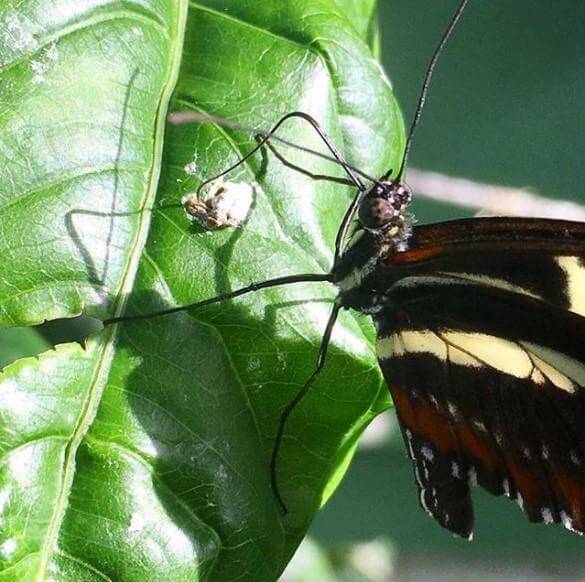
Butterfly sipping minerals from bird poop
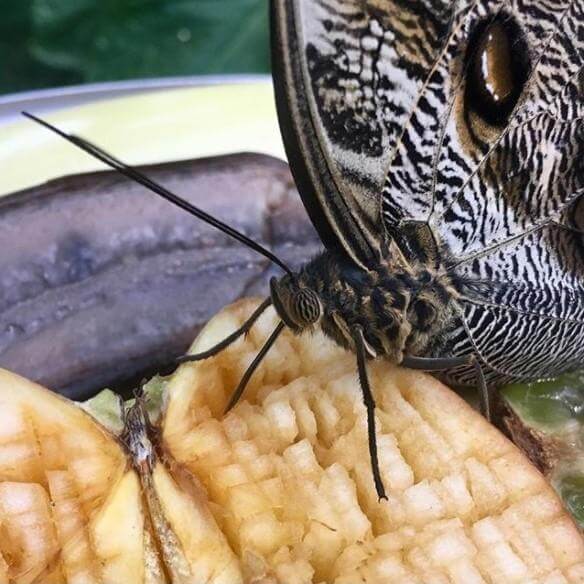
Butterfly sipping on juices from a rotting fruit
Some butterflies also enjoy a different sugary treat, fruit. They especially enjoy fully ripened and rotting fruit. Why is that? As fruit starts to decompose it softens and becomes more liquid. Butterflies will eat a variety of fruit. We like to feed them bananas, apples, and pears. We poke each piece of fruit many times to make it nice and juicy and give space for butterflies to stick their proboscises.
Butterflies do not always eat for their own nourishment. Many kinds of butterflies, usually male, will feed on other moist substances like puddles, wet gravel, sweat, scat, and even tears! What these butterflies are often doing is gathering salts and minerals to pass on to female butterflies which helps with egg development. Sometimes a large group of butterflies can be seen feeding in this way together, a puddle club!
What Do Butterflies Eat?

Butterflies, like many other insects, go through a life cycle consisting of four stages: egg, larva (caterpillar), pupa (chrysalis), and adult. Their dietary preferences vary during these stages:
Egg Stage: Butterfly eggs are typically laid on host plants, which provide food for the emerging caterpillar. The female butterfly selects the host plant carefully, as the caterpillar’s diet is specific to the plant species.
Larva (Caterpillar) Stage: This is the feeding stage of a butterfly’s life. Caterpillars primarily consume plant material, specifically the leaves of the host plant on which they were laid. Their mandibles are adapted for chewing leaves and stems. Caterpillars have voracious appetites, and they feed continuously to fuel their growth.
Pupa (Chrysalis) Stage: During the pupal stage, butterflies do not eat. Instead, they undergo a remarkable transformation, with their bodies restructuring inside the chrysalis.
Adult Stage: Adult butterflies have a specialized diet consisting primarily of nectar from flowers. They use their proboscis, a long, tube-like structure, to sip nectar. They are attracted to flowers with bright colors and sweet scents. In addition to nectar, some species also feed on other fluids like rotting fruit, tree sap, or even minerals from puddles, a behavior known as “puddling.”
Not all butterflies have the same dietary preferences, and their food sources can vary based on their species. Moreover, butterflies also play a role in pollination as they visit flowers for nectar, aiding in the reproduction of plants. This mutualistic relationship between butterflies and plants is crucial for the survival of both.
What Do Butterflies Eat Other Than Nectar?
Butterflies, in addition to nectar, may consume other substances depending on their life stage and species. Here are some of the alternate food sources for butterflies:
- Fruit Juice: Some butterfly species are attracted to and feed on ripe or rotting fruits. They may sip the juice from fruits like oranges, bananas, and watermelons. This behavior is more commonly observed in tropical regions.
- Tree Sap: Butterflies, especially those in the family Nymphalidae, are known to feed on tree sap. They may visit trees that are oozing sap and use their proboscis to drink the sugary liquid.
- Puddling: Male butterflies, in particular, engage in a behavior called “puddling” or “mud-puddling.” They are often seen gathering on damp soil, mud, or even dung. This behavior is thought to provide essential minerals and salts that aid in reproduction.
- Carrion: In some cases, butterflies have been observed feeding on decaying animal matter, such as carcasses or feces. This is relatively rare and is typically seen in certain tropical species.
- Mineral-Rich Soils: Butterflies, especially males, may visit specific areas of soil that are rich in minerals. They extract important nutrients and minerals from the soil, which can be important for their reproductive success.
- Bird Droppings: Some species have been observed drinking liquids from bird droppings, likely to obtain essential nutrients or minerals.
Not all butterfly species exhibit all of these behaviors, and the availability of these alternative food sources may vary based on environmental conditions and regional factors. The primary source of nutrition for most adult butterflies is still floral nectar, which provides them with essential sugars for energy.
Do Butterflies Eat Leaves?
Butterflies, in their adult stage, do not typically eat leaves. Adult butterflies have a specialized mouthpart called a proboscis, which is a long, tubular structure that allows them to sip nectar from flowers. They are primarily nectar feeders, and their diet is centered around consuming the sugary nectar produced by flowering plants.
However, in the earlier stages of their life cycle as caterpillars (larvae), butterflies do eat leaves. Caterpillars are voracious herbivores and have specialized mandibles for chewing plant material. They feed on the leaves of specific host plants that vary depending on the butterfly species. The choice of host plant is crucial for the caterpillar’s survival and development because different species of caterpillars have adapted to feed on particular plant species.
While adult butterflies do not eat leaves, caterpillars, which are the larval stage of butterflies, feed almost exclusively on leaves before they pupate and undergo metamorphosis into adult butterflies.

What Plants Do Butterflies Eat?
Butterflies are highly diverse, and the plants they eat vary based on their species. The relationship between butterflies and plants is often specific, as different butterfly species have evolved to depend on particular host plants. Here are some examples of host plants for various butterfly species:
- Monarch Butterfly (Danaus plexippus): Milkweed species, such as common milkweed (Asclepias syriaca) and swamp milkweed (Asclepias incarnata).
- Swallowtail Butterflies (Papilionidae family): Different species of swallowtail butterflies have specific host plants. For example, the Eastern Tiger Swallowtail (Papilio glaucus) caterpillars feed on leaves of various trees, including tulip tree (Liriodendron tulipifera) and cherry tree (Prunus spp.).
- Painted Lady Butterfly (Vanessa cardui): Various thistles (Cirsium and Carduus species) and other plants like mallows (Malva species).
- Cabbage White Butterfly (Pieris rapae): Members of the Brassicaceae family, including cabbage, broccoli, and mustard plants.
- Black Swallowtail Butterfly (Papilio polyxenes): Plants in the Apiaceae family, including parsley (Petroselinum crispum) and dill (Anethum graveolens).
- Gulf Fritillary Butterfly (Agraulis vanillae): Passionflower vines (Passiflora species).
- Zebra Longwing Butterfly (Heliconius charithonia): Various passionflower vines, especially Passiflora incarnata.
These are just a few examples, and there are numerous butterfly species, each with its specific host plants. These host plants are crucial for the survival and development of butterfly caterpillars, as they provide the necessary food and nutrients during the larval stage. The relationship between butterflies and their host plants is an example of coevolution, where both the butterflies and plants have adapted to rely on each other for their mutual benefit.
What Flowers Do Butterflies Eat?
Butterflies are known to feed on a wide variety of flowers. They are attracted to flowers with certain characteristics, such as bright colors, sweet scents, and easily accessible nectar. Here are some examples of flowers that butterflies commonly feed on:
- Butterfly Bush (Buddleja davidii): True to its name, this shrub is a favorite of many butterfly species. It produces clusters of small, nectar-rich flowers that attract a wide range of butterflies.
- Milkweed (Asclepias spp.): Milkweed plants are essential for monarch butterflies. Monarchs lay their eggs on milkweed, and both the caterpillars and adult butterflies feed on its nectar.
- Lantana (Lantana camara): Lantana is known for its vibrant clusters of tubular flowers that are particularly attractive to swallowtail and brush-footed butterflies.
- Zinnia (Zinnia spp.): Zinnias are popular garden flowers that produce bright, daisy-like blooms that are a favorite of swallowtail and painted lady butterflies.
- Coneflower (Echinacea spp.): Coneflowers have large, daisy-like flowers that provide nectar for various butterfly species, including swallowtails and fritillaries.
- Coreopsis (Coreopsis spp.): Coreopsis, also known as tickseed, produces yellow or orange daisy-like flowers that are a favorite of many butterflies, including the eastern tiger swallowtail.
- Verbena (Verbena spp.): Verbena’s clustered, small, tubular flowers are a great nectar source for many butterfly species, including the hairstreaks and skippers.
- Joe-Pye Weed (Eutrochium spp.): Joe-Pye weed’s pink or purple flower clusters attract a range of butterflies, including swallowtails and monarchs.
- Phlox (Phlox spp.): Phlox flowers are a source of nectar for various butterfly species, and they come in various colors, including white, pink, and purple.
- Marigold (Tagetes spp.): Marigolds produce vibrant orange and yellow flowers that are known to attract butterflies like the painted lady and the red admiral.
It’s important to plant a variety of flowers to provide a continuous nectar source for butterflies throughout their active season. Native plants are often preferred by local butterfly species, so consider incorporating native wildflowers into your garden to attract and support your local butterfly population. Providing a range of flowers with different blooming times and colors can also help ensure a constant food source for butterflies.
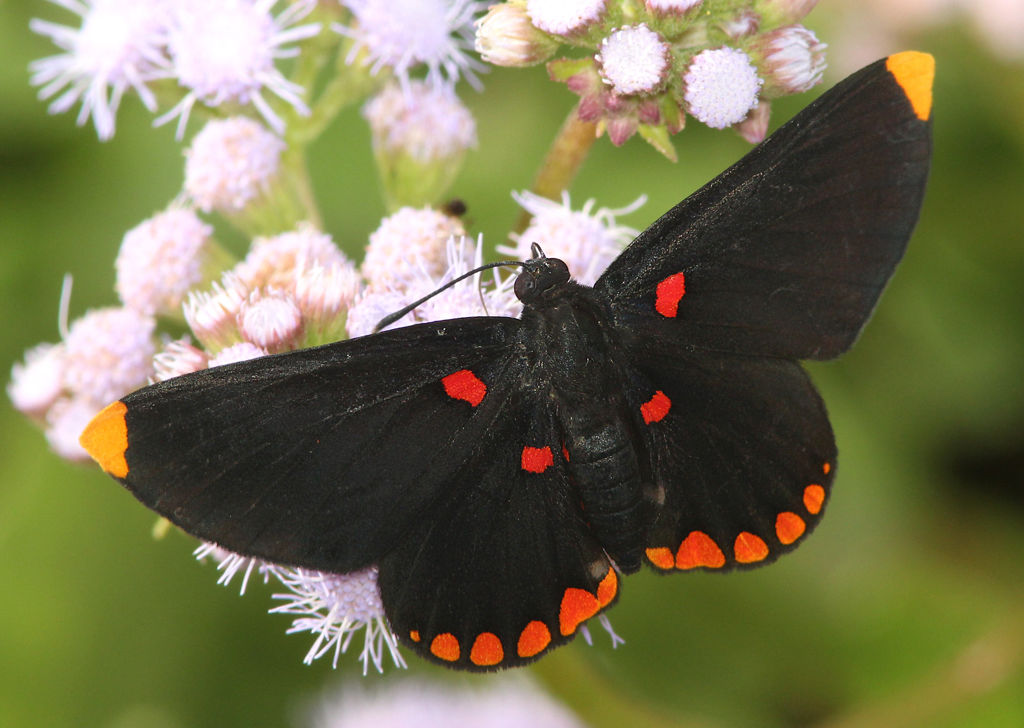
What Fruit Do Butterflies Eat?
Adult butterflies primarily feed on nectar from flowers, and they do not typically consume fruit as a significant part of their diet. Nectar is their primary source of energy, providing the sugars they need for flight and survival. However, in some rare instances, butterflies may be observed feeding on fruit juices, especially when other nectar sources are limited. This behavior is more common in tropical regions and among certain butterfly species.
While adult butterflies primarily rely on nectar, their larval stage, the caterpillar, often feeds on plant leaves, and their choice of host plants can vary widely among species. Additionally, some butterflies may visit fruit for reasons other than feeding, such as seeking moisture or minerals found in rotting fruit. However, fruit consumption by adult butterflies is not a regular or significant part of their diet.
What Can I Feed A Butterfly?
Feeding butterflies is not a common practice, as they primarily obtain their nutrition from natural nectar sources in the wild. However, if you come across a weakened or injured butterfly, or if you are raising caterpillars and want to provide food for them, you can offer a few solutions. Here are some options:
- Sugar Water Solution: Mix a solution of 10% sugar and 90% water. Use a cotton ball or a small piece of sponge soaked in this solution and place it near the butterfly. Ensure that the liquid is not too deep, so the butterfly can access it easily. This can provide a quick energy boost for a weakened butterfly.
- Overripe Fruit: Mash up overripe fruits, such as bananas or oranges, and place a small piece of the mashed fruit near the butterfly. Keep in mind that not all butterfly species are attracted to fruit, so this may not work for all butterflies.
- Artificial Nectar: You can make an artificial nectar solution using a mixture of water and honey (about 4 parts water to 1 part honey). Again, use a small cotton ball or sponge to make the solution accessible to the butterfly.
- Potted Plants: If you’re raising caterpillars, ensure that you have the appropriate host plants available for them. For example, if you’re raising monarch caterpillars, you’ll need milkweed plants as their host plant. The caterpillars will consume the leaves of these plants.
Exercise caution and avoid overfeeding butterflies. They have delicate digestive systems, and overfeeding can lead to stress or injury. In the case of injured butterflies, it’s often best to provide a suitable environment and time to recover. If you’re raising caterpillars, it’s essential to provide the correct host plants and monitor their development.
It is generally best to let butterflies find their own natural food sources, and interventions should be reserved for situations where a butterfly is injured or in distress. In most cases, butterflies are best observed and enjoyed in their natural habitat.
How Often Do Butterflies Eat?
The frequency of butterfly feeding can vary depending on factors such as species, environmental conditions, and individual butterfly health. Here are some key points to consider regarding the feeding frequency of butterflies:
- General Feeding Frequency: Adult butterflies feed relatively frequently, usually multiple times a day. They require a steady supply of nectar to sustain their energy for activities like flying, searching for mates, and laying eggs.
- Environmental Factors: The availability of nectar sources and environmental conditions play a significant role in how often butterflies feed. In favorable conditions with abundant flowers and nectar, butterflies may feed more frequently.
- Diurnal Feeding: Most butterflies are diurnal, meaning they are active during the day. They tend to feed during daylight hours when flowers are open and nectar is accessible.
- Short Feeding Sessions: Butterfly feeding sessions are relatively short, often lasting only a few seconds to a couple of minutes. They visit multiple flowers during each feeding session.
- Migratory Behavior: Some butterfly species, like the monarch butterfly, engage in long-distance migrations. During these journeys, they may fly continuously for hours or days without feeding. They rely on stored energy reserves during migration.
- Puddling Behavior: Male butterflies, in particular, may engage in puddling behavior, during which they gather on damp soil or other suitable substrates to extract essential minerals. This behavior is intermittent and can occur on a less frequent basis.
- Life Cycle Stage: Caterpillars (the larval stage) are constant feeders, as they need to consume plant material almost continuously to support their rapid growth.
- Life Span and Seasonal Differences: The feeding frequency can also vary based on the butterfly’s life span. Some species may have relatively short adult life spans and need to feed more frequently, while others have longer adult lives.
Butterflies, as adults, typically feed multiple times a day, but the exact frequency can vary based on factors like the availability of nectar, environmental conditions, and the butterfly’s specific needs. They have adapted to efficiently extract nectar from flowers during their short feeding sessions, which allows them to sustain their activities and reproductive efforts.


